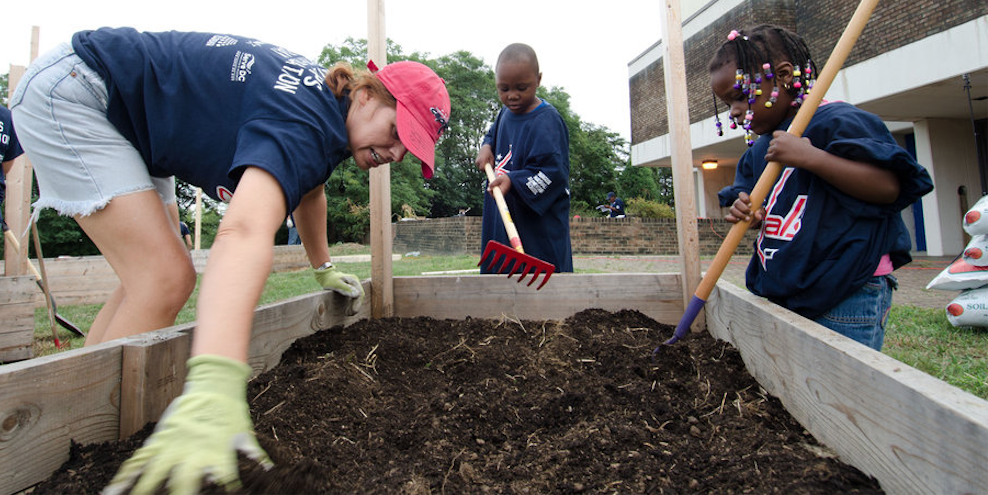Lesson 15
Finding Input Values and Function Values
These materials, when encountered before Algebra 1, Unit 4, Lesson 15 support success in that lesson.
15.1: Inches to Feet and Back (10 minutes)
Warm-up
In this warm-up students convert units from inches to feet. This will be helpful when students examine inverse functions and reverse roles of inputs and outputs.
Student Facing
There are 12 inches in 1 foot.
Complete the table by converting the lengths to the other unit.
| inches | feet |
|---|---|
| 36 | |
| 18 | |
| 4 | |
| 6.3 | |
| 105 |
Student Response
For access, consult one of our IM Certified Partners.
15.2: Building Square Planters (15 minutes)
Activity
In this activity students use the situation of creating a square planter to find the area within the planter based on the side lengths and the side lengths based on the area. In the associated Algebra 1 lesson students begin looking at inverse functions. This activity supports students by getting them to find area of a square based on the side length or side lengths of a square based on the area.
Student Facing

For a class project, students are building an outdoor square planter from pieces of wood, then filling it with soil. The amount of soil needed is based on the area within the square.
- Mai has boards of wood that are 2 meters long. What is the area of the largest square planter she could make?
- Tyler has boards of wood that are 5 feet long. What is the area of the largest square planter he could make?
- Lin has boards of wood that are 53 inches long. What is the area of the largest square planter she could make?
- Elena has enough soil to fill 36 square feet in a planter. What length boards should she cut to make the square planter that can hold all the soil?
- Andre has enough soil to fill 16 square meters in a planter. What length boards should he cut to make the square planter that can hold all the soil?
- If a student has boards of wood that are \(s\) feet long, what is the area of the largest square planter they can build? Write the solution as an equation involving \(f(s)\).
Student Response
For access, consult one of our IM Certified Partners.
Activity Synthesis
The purpose of the discussion is to recognize that some functions allow you to find the output based on the input as well as the input based on the output. Ask students,
- “For the function you wrote involving \(f(s)\), describe the input and output in terms of the situation.” (The input is the length of boards used to make the square planter and the output is the area in the square planter.)
- “Is it easier for you to solve for the area when you know the side length or for the side length when you know the area?” (It is easier to find the area from the side length because I can just multiply the side length by itself.)
- “In most cases you do not get to choose what information you have. In reality, when building a planter like these, do you think it is more likely to know the area required or the length of the boards used?” (I can see it both ways. If the planter must fit in a certain space, it may be more realistic to know the length of board used so that it fits in the right place. In other cases, it may make sense to figure out what you want to plant and how much area is needed for all the plants you will put inside, then figure out the length of boards you need to cut to make the planter.)
15.3: Inputs and Outputs from Graphs (15 minutes)
Activity
In this activity, students use a linear graph to find an output for a given input and an input for a given output. In the associated Algebra 1 lesson, students examine some ways to use the inverse of a function. This activity supports students in thinking about solving for the input or output based on the information that is known.
Student Facing
The graph represents \(y = f(x)\).

- Use the graph to find the values.
- \(f(2)\)
- \(f(\text{-}1)\)
- \(f(5)\)
- \(f(0)\)
- Use the graph to find the value of \(x\) that makes these true.
- \(f(x) = 11\)
- \(f(x) = 9\)
- \(f(x) = \text{-}1\)
- \(f(x) = 5\)
Student Response
For access, consult one of our IM Certified Partners.
Activity Synthesis
The purpose of this discussion is for students feel confident that they know how to calculate the input or output of a function using the graph representation. Select students to share their solutions. Ask students,
- “How do you find the output from the graph when you were given the input?” (I find the input value on the \(x\)-axis and follow that value up or down to get the \(y\)-value on the graph.)
- “How do you find the input from the graph when you were given the output?” (I found the output value on the \(y\)-axis and follow that value left or right to get the \(x\)-value on the graph.)